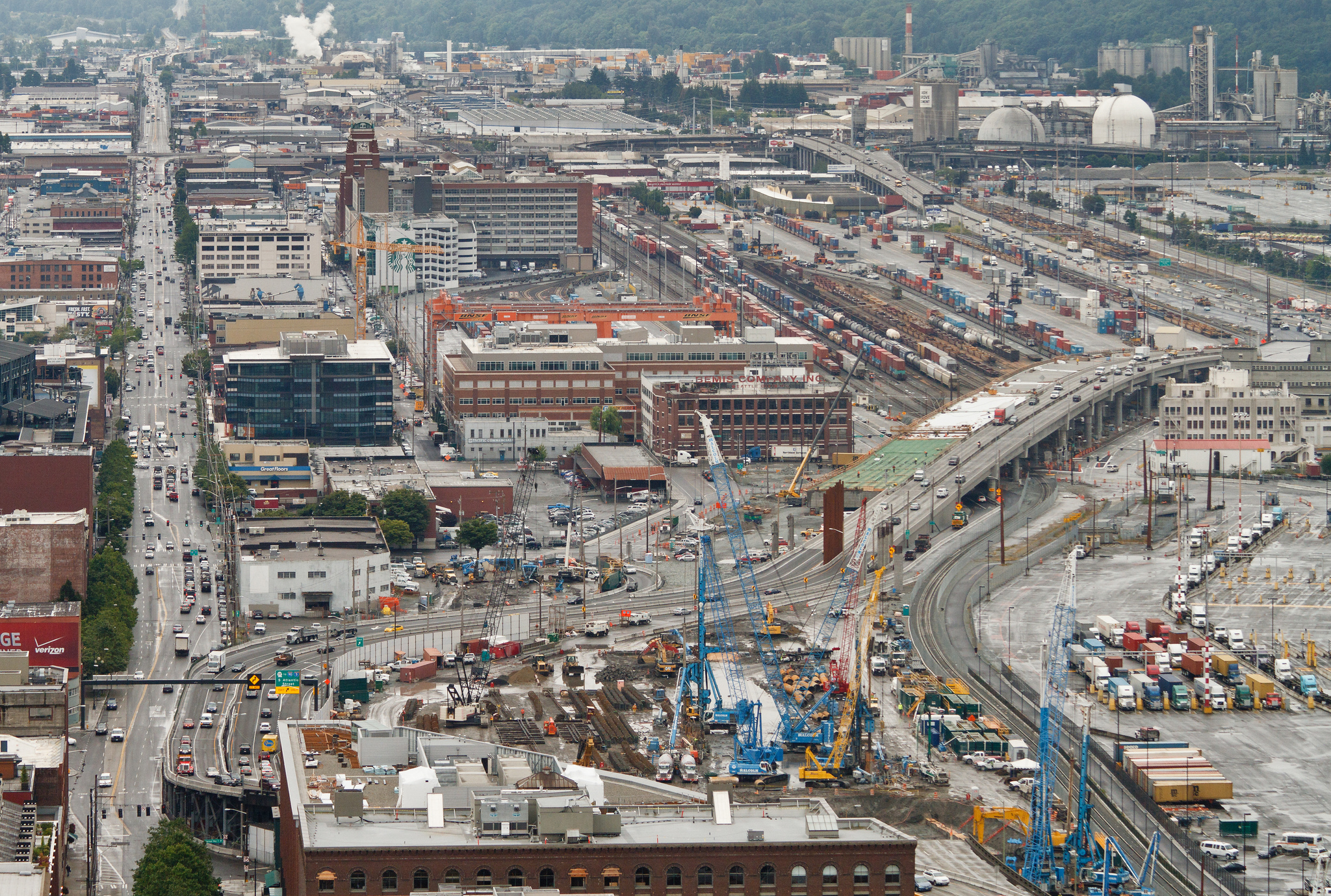This past week saw a new plot twist in the Bertha tragicomedy: vehicle traffic is way down on the Alaskan Way Viaduct, from 110,000 daily trips in 2009 to 62,000 in 2012. As Ben noted, this not only explains some of the drop in solo commuting Mayor Murray touted in his State of the City speech but also bolsters the Mayor’s goal of lowering it below 25 percent. In fact, this target almost certainly hinges on not finishing the tunnel, since that new capacity would shift recent converts to carpooling, transit, and cycling back into their cars.
Given the uncertainty that Bertha will ever complete her route, there’s no question the SDOT data is good news. If we enter into the legal and engineering quagmire that the current standstill portends and the tunnel never comes to be, at least we’ll avoid catastrophic citywide gridlock.

Over at Sightline, Clark Williams-Derry offers four reasons that Viaduct volumes have declined. The most interesting is the “disappearance” of trips due to traffic delays, as commuters have shifted modes and changed routes in response to congestion caused by the removal of the southern end of the Viaduct. But not all of Seattle has seamlessly adapted to the substantial drop in capacity. Though a little hyperbolic, the commenters on Clark’s post reveal that commuting from West Seattle remains a struggle.
But the tunnel has never been the best solution to that. Not only is it devoid of exits into downtown and liable to worsen, not improve, congestion in Pioneer Square, but it’s stuck in an outdated, cheap-oil paradigm that we need to move away from. Plus, we now see it’s grossly overbuilt! It was sized for and justified based upon 110,000 daily trips, 40 percent of which are gone.
Still, I fear discounting the grievances of West Seattle commuters only solidifies their pro-tunnel point of view. In their minds, after all, they haven’t adapted seamlessly to a diminished Viaduct. Plus, it detracts from the real solution: bringing light rail to West Seattle. That isn’t a new fight. Back in December David Lawson considered what a West Seattle Link might actually look like.
Two months on, the data prove we don’t need the tunnel. But if commuting from West Seattle is really a nightmare, then the case for connecting it with better transit is only stronger. Rather than deflect their plight, let’s redirect disgruntled commuters towards that goal.

